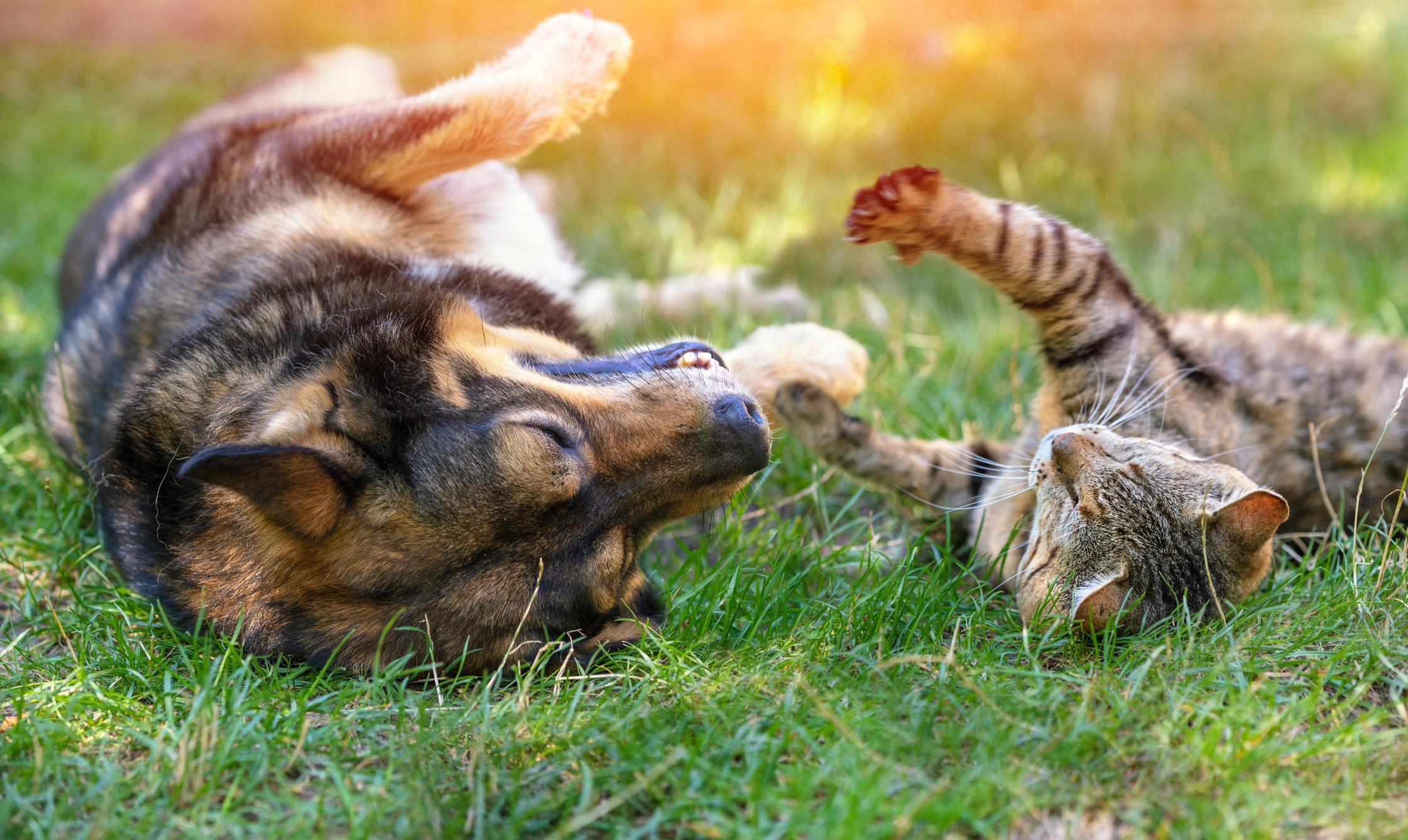Top 10 Summer Pet Safety Hazards to Watch Out For


Summer provides longer days, warmer climes, new excursions, and outdoor socializing, which may be made much more delightful with dogs in tow! However, when the temperature rises, so do the threats to our dogs. To keep your dogs safe, be aware of potential risks, as well as some top recommendations to help avoid your pet from injuring themselves during the summer months.
1. Dehydration and Heatstroke
Our pets’ fur is fantastic in the chilly winter months, but it can be quite unpleasant in the summer, especially for long-haired dogs who require frequent maintenance. Heatstroke happens when the body’s temperature increases over normal levels and the body is unable to absorb any extra heat.
The following are some of the major symptoms to look out for:
- Gums are pale and dry
- The tongue is bright red
- Panting excessively
- Behavior that is agitated
- Drooling
- Heart rate has increased
- Vomiting
Your pet should have access to clean, fresh drinking water to reduce the danger of dehydration and heatstroke. Avoid exercising your dog during the warmest part of the day and try to get out early in the morning or late in the evening. If you are out with your dog for the day, bring a portable water bottle or bowl that can be conveniently accessed and distributed as needed. Short-nosed canines, dark-colored pets, and overweight animals are more prone to heatstroke and should be closely watched.
If you suspect your dog is dehydrated or exhibiting one or more of the symptoms described above, cool them down with a hose and contact us as soon as possible for guidance.
2. Ticks
Because our pets will be spending more time outside, they will be more susceptible to ticks. Ticks are prevalent in grassland and woods. Ticks are microscopic parasites that feed on the blood of other animals. They have an egg-shaped body that swells and darkens when loaded with blood.
If you find a tick and are certain that you can remove it, you should do so right soon. You should avoid squeezing your pet’s body or leaving the head in. A tick removal tool, which may be acquired from your local practitioner, can be used to remove a tick. If the tick is not removed properly, the tick’s head may remain in your pet, causing a severe response.
To keep your pet from being attacked by ticks, you may obtain tick repellent treatments from your veterinarian.
3. Stings from bees or wasps
When a bee gets close, we worry about the buzzing sounds; nevertheless, an interested pet may attempt to explore and, as a result, may be stung. Most stings will cause your pet to be irritated and in pain. Depending on where your pet was stung and if they have been stung before, there may be a lot of swelling and they may scratch the affected region constantly, resulting in hair loss. If your pet exhibits any of the following signs, he or she may have been stung:
- Drooling
- Whining
- Swelling
- Pawing at the lips or the face
- Biting the stinger’s stinger’s stinger’s stinger’s sting
- They’re holding their paw up (if that is where they have been stung)
- Hives
If they have been stung near their mouth or nose, please contact us immediately as this might be a medical emergency.
4. Added Fur
Keeping your pet clean and well-groomed is especially crucial in warmer weather. Brushing your pet’s hair to remove any extra or matted fur and to thin it down will assist. As previously stated, having thick, unruly hair may lead to heatstroke. However, keep in mind that your pet’s coat also prevents them from becoming sunburned.
Some pets are more prone to sunburn than others. Fair-haired animals, such as white dogs and cats, have fair skin beneath their fur. Sunburn is also a problem for pets with fine, thin hair and hairless breeds. Remember that regardless of how much fur they have, all pets are vulnerable in areas where there isn’t much fur, such as their ears, nose, and belly. You may buy pet-friendly sunscreen to protect your pet.
5. Barbecues and Outdoor Eating
Nothing beats preparing a feast and sipping your favorite beverage outside, but there are several things to keep in mind for your pet, including dangerous foods, poisonous drinks, hot surfaces, and kebab skewers, to mention a few.
Some foods and beverages that should be kept out of your pet’s reach include:
- Bone-containing foods
- Seed-containing foods
- Grapes
- Garlic, raw
- Onion, raw
- Raisins
- Fresh corn on the cob
- Chocolate Beer and Wine
- Java/coffee beans
- Teas and tea bags
6. Pools, sea, rivers, and lakes
When the temperatures are hot, many dogs may find a pool, river, or lake appealing; nevertheless, it is vital to realize that not all dogs like or can swim! If you are exposing your dog to water for the first time, we recommend starting with a shallow children’s paddling pool. If they love it, you might gradually expose them to larger, deeper waters while utilizing a dog-specific flotation device to keep them safe. Please be cautious if you are near water with a current or tide; even if your dog is a great swimmer, they might rapidly get into difficulty if swimming against the tide.
Keep an eye out for blue-green algae and any accompanying warning signals, as this is frequently harmful to dogs. Do not allow your dog to swim or consume water that you fear is polluted. If you feel your dog has come into touch with any, please call us right once.
If your dog enjoys swimming, make sure they are completely cleaned after they have played in the water to remove salt, chlorine, and hazardous germs.
7. Walking on Scorching Pavements and Fake Grass
Hot pavements can cause your pet’s paws to burn. Their paws are exactly as delicate as the bottoms of our feet, so if you find it painful to touch, your pet will feel the same way. We recommend using the seven-second rule: if you can lay your palm on the surface for seven seconds or more, your pet should be able to handle the temperature. If you can’t, then the ground is too hot for your pet to walk on.
You should take the following precautions to keep your pet’s paws from burning:
- Take them on a walk during the cooler hours of the day, such as early morning or late evening.
- If you’re out in the middle of the day, try to walk them on the grass whenever feasible.
- Clean and inspect your dog’s paws on a regular basis.
8. Pesticides and Fertilizer
The majority of fertilizers include nitrogen and iron, which can poison your pet and create serious gastrointestinal problems, causing inflammation. When your pet comes into touch with pesticides, he or she may have tremors and convulsions. If you are unsure if your pet has been exposed to such chemicals (but your pet is exhibiting one of the symptoms listed below), please contact us so that we can make the proper treatment recommendations:
- Diarrhoea
- Breathing difficulties
- Vomiting
- Drooling
- Nausea
- Gums with a dark, muddy appearance
- Abdominal discomfort has resulted in an unusual posture.
- Seizures
- Tremors
9. Plants and flowers
Many flora and flowers are toxic to pets. They may become pretty ill if they ingest a poisonous plant, depending on how much they consume and their level of toxicity. The following is a list of some of the plants that might be harmful to our dogs during the summer months:
- Elder: Both cats and dogs are poisoned by the entire plant, including the elderberries.
- Lilies: Having a toxin that can induce vomiting, diarrhea, collapse, fits, heart difficulties, and renal failure (cats). Lily flowers and leaves are very commonly used in flower bouquets, however they are extremely toxic to both dogs and cats.
- Foxglove: Both the seeds and the leaves of a foxglove plant contain a toxin that can cause heart issues, illness, diarrhoea, fits, and collapse in your pet.
- Geranium: Both dogs and cats are poisoned by the entire geranium plant.
- Hydrangea: Cyanide is harmful to both dogs and cats in parts of the hydrangea plant.
10. Cars
Even if it is only for a few minutes, you should never leave your dog in a car on a hot day. Heatstroke may strike rapidly and be lethal. In hot weather, the temperature inside a car may quickly rise, making it hotter inside than outside. If your dog becomes unhappy in your heated car, bystanders are asked to contact 999, and police will intervene to free the dog — even if it involves causing damage to your vehicle.
Summer is a fun time of year for our dogs, but it is important to be aware of the dangers to which they may be exposed in order to keep them safe. Please contact us if you are worried about your pet and would like some more guidance.




















